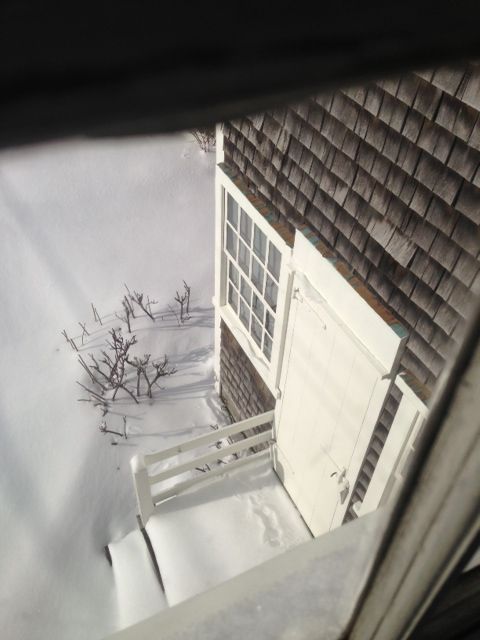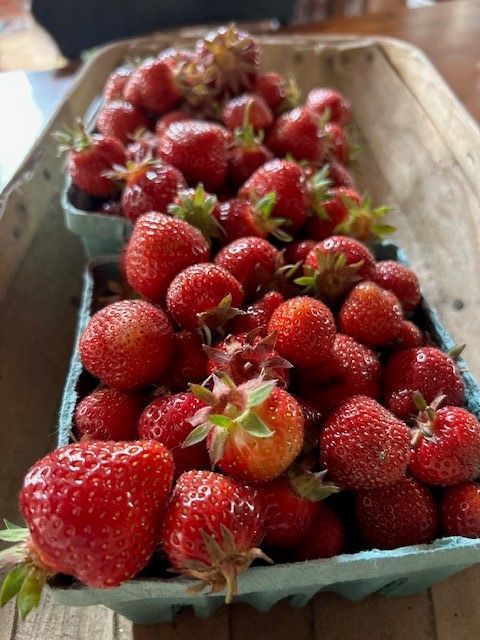Putting Things By
An older term, that we seem to not use that much anymore but maybe that’s in part because not many people “put things by” anymore. It is having a bit of a resurgence as people try to return to the garden and focus on local produce. My in-laws used to spend a lot of time – before I knew them – canning and preserving many different things – from jellies to string beans that became “dilly beans.”
I, on the other hand, do not can produce. Frankly, I fear messing up the process and making my family sick. So, for now, I stick to making refrigerator jams and pickles. I have made some chive vinegar – that is frankly, amazing, and a brilliant shade of pink! But in any case, Bartlett’s Farm opened for pick-your-own strawberries on June 7 and I made my way over on June 8. My son has been asking for strawberry jam since about February – I told him I wait for fresh and local but he wanted some so badly he was begging for store bought. I almost caved but then I told him – out of season and they taste like cardboard – and also made a LONG journey to get to us. Once people ate with the seasons – now we do not have to with trains, planes, and ships crossing all over. It is also, why, oftentimes, fruit has no flavor. Produce is picked often before it ripens and “ripens” as it ships – or with sprays – and since many varieties have been crossed with others or engineered, we have lost the taste. I remember tasting a peach a few years back from North Carolina – fresh off the tree. After rubbing it to get all the “fur” off, I bit into an exquisite peach that tasted like a peach of my youth.
So, Maria was not eating a strawberry in January but she was eating them in June – local and full of flavor. And likely, putting some by as well.
JNLF
Recent Posts





